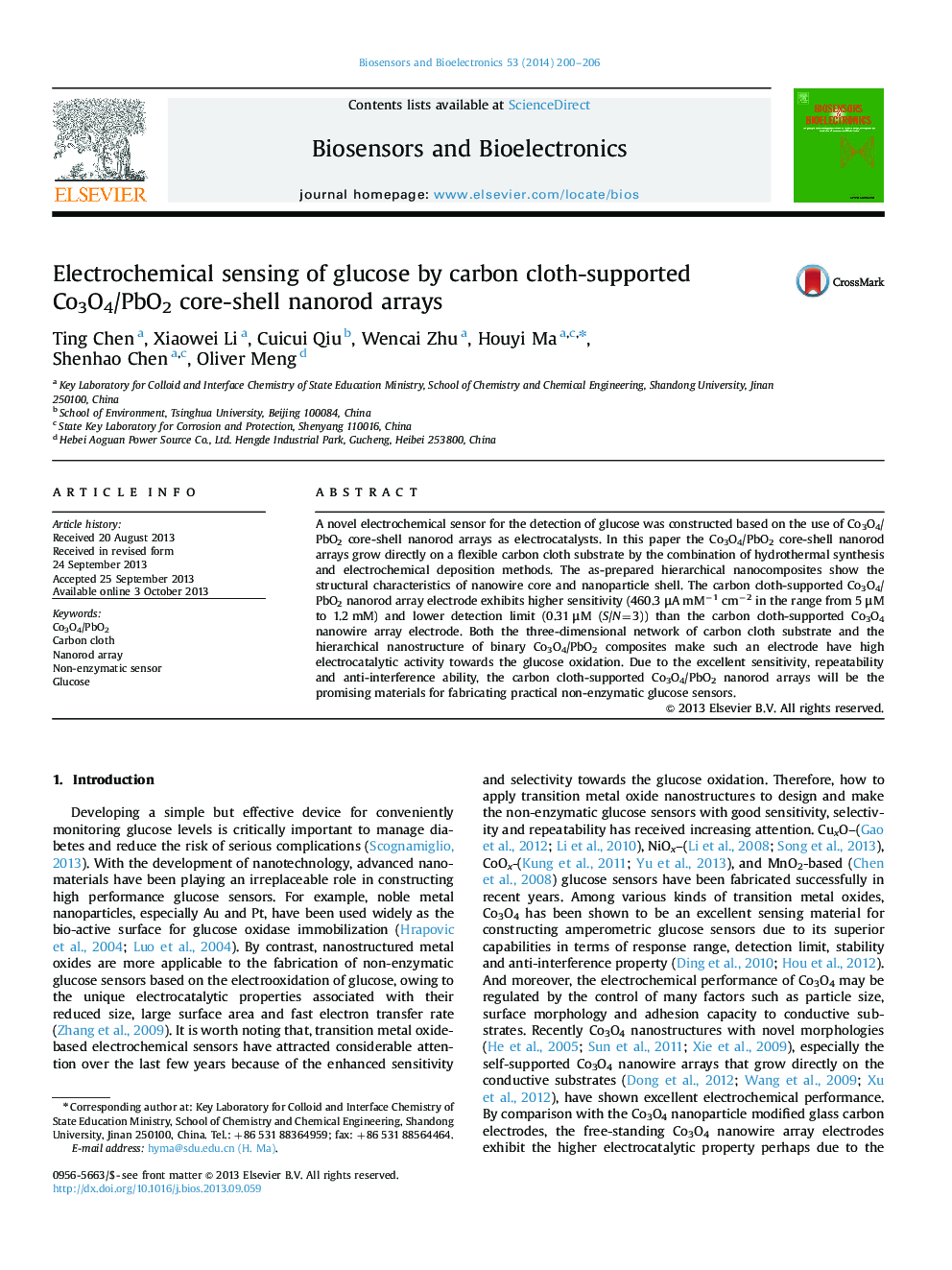| Article ID | Journal | Published Year | Pages | File Type |
|---|---|---|---|---|
| 866692 | Biosensors and Bioelectronics | 2014 | 7 Pages |
•The carbon cloth-supported Co3O4/PbO2 core-shell nanorod arrays were firstly fabricated.•The carbon cloth-supported Co3O4/PbO2 nanorod array electrode was directly used as the flexible glucose sensor.•The flexible glucose sensor displayed low detection limit and high sensitivity for the detection of glucose.•The sensing performance of this type of flexible glucose sensors were evaluated by measuring human serum samples.
A novel electrochemical sensor for the detection of glucose was constructed based on the use of Co3O4/PbO2 core-shell nanorod arrays as electrocatalysts. In this paper the Co3O4/PbO2 core-shell nanorod arrays grow directly on a flexible carbon cloth substrate by the combination of hydrothermal synthesis and electrochemical deposition methods. The as-prepared hierarchical nanocomposites show the structural characteristics of nanowire core and nanoparticle shell. The carbon cloth-supported Co3O4/PbO2 nanorod array electrode exhibits higher sensitivity (460.3 μA mM−1 cm−2 in the range from 5 μM to 1.2 mM) and lower detection limit (0.31 μM (S/N=3)) than the carbon cloth-supported Co3O4 nanowire array electrode. Both the three-dimensional network of carbon cloth substrate and the hierarchical nanostructure of binary Co3O4/PbO2 composites make such an electrode have high electrocatalytic activity towards the glucose oxidation. Due to the excellent sensitivity, repeatability and anti-interference ability, the carbon cloth-supported Co3O4/PbO2 nanorod arrays will be the promising materials for fabricating practical non-enzymatic glucose sensors.
Graphical abstractFigure optionsDownload full-size imageDownload as PowerPoint slide
